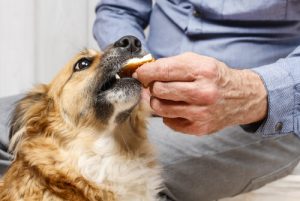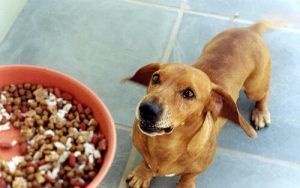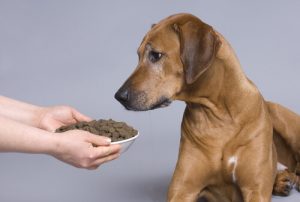Mixing Dog Foods Could Be Fatal To Your Pet

When our dogs seem bored with dry food or kibble, many of us choose to mix it with a bit of ham or chicken. Or, we try any old stew we’ve made, to make it easier to vary our pets’ diets. Butm did you know that mixing dog foods is actually dangerous for your pet? In fact, it could even turn out to be fatal.
We are going to tell you how and why mixing dog foods in this way is so dangerous. Of course, it’s a completely normal thing to do. And, you may even have good intentions. However, we should be aware of the potential consequences. And in this case, consequences can be very serious.
Why We Shouldn’t Mix Dog Foods
First, we know that providing variety for our pets by alternating their foods can be advisable. However, it’s important to understand the difference between the word “alternate” and the word “mix.”

Alternating means switching things up. For instance, if today you give your dog dry food and tomorrow rice with chicken, that’s alternating. Practices such as these aren’t harmful at all. In fact, the danger comes when, instead of alternating like this, we mix everything all at once.
To understand the dangers of mixing, let’s analyze the two types of food – this will help to explain why mixing dog foods could kill your dog.
Dry Food or Kibble
Bought dry dog food is produced by cooking the dry mixture and then molding it into different shapes.
It provides slow-release energy and is slow to digest, meaning that your dog won’t need more than two meals of it a day. This type of food keeps them fuller for longer – your dog’s digestive system can take between 8 and 10 hours to get to grips with dry food or kibble.
Natural Food
Natural food is the name given to the food that we humans eat, which is based on either animal or vegetable products. Unlike dry food, it’s very easy to digest, and the energy is burned much more quickly.
The Dangers of Mixing Foods
The great danger lies in mixing dog foods that have radically different digestion processes. When we mix different types of food this way, the dog cannot digest the natural food normally. This creates a build-up of gas that can lead the animal to experience a condition called gastric torsion. This happens because the natural food becomes trapped by the slower-digesting dry food, preventing it from being digested properly.
Gastric torsion can put an end to your pet’s life in a matter of hours if left untreated, so you should seek help from a qualified veterinarian as soon as you notice the symptoms.
How to Tell if Your Dog has Gastric Torsion
Your pet’s behavior is the best sign of gastric torsion. The most behavioral signs are:
- Being restless, and looking constantly at its own stomach or at the floor.
- Retching, or trying to vomit and being unable to. White foam may come out of your dog’s mouth when it tries to vomit.
- Having a distended abdomen which sounds like a drum when tapped, because of the inflammation and build-up of gas.
- Pain and visible inflammation in the abdomen.
So, if you see any of these signs, head to the vet’s office without delay.
How to Make Sure Your Dog Doesn’t Get Bored of its Food

Or, if your dog seems to be getting bored of eating the same old kibble every day, you can follow the alternation method we outlined above. Simply give your pet one meal of natural food, and the next of kibble or dry food.
Additionally, you can opt to give your pet one meal made up of 10% natural food and 90% dry food. As long as you stick to that exact ratio, the meal won’t harm your dog (even though it is a mixture).
The danger comes when the mixture is made up of equal parts natural and dry food. If you have been doing this up until now, make sure you stop straight away. Do this for the good of your pet’s health. And above all, it’s important to watch out for the symptoms of gastric torsion if you have a large dogs. After all, larger dogs are much more likely to suffer from this condition which, sadly, often ends up being fatal.
All cited sources were thoroughly reviewed by our team to ensure their quality, reliability, currency, and validity. The bibliography of this article was considered reliable and of academic or scientific accuracy.
- Monnet, E. (2003). Gastric dilatation-volvulus syndrome in dogs. Veterinary Clinics: Small Animal Practice, 33(5), 987-1005.
- Brockman, D. J., Washabau, R. J., & Drobatz, K. J. (1995). Canine gastric dilatation/volvulus syndrome in a veterinary critical care unit: 295 cases (1986-1992). Journal of the American Veterinary Medical Association, 207(4), 460-464.
- Glickman, L. T., Glickman, N. W., Perez, C. M., Schellenberg, D. B., & Lantz, G. C. (1994). Analysis of risk factors for gastric dilatation and dilatation-volvulus in dogs. Journal of the American Veterinary Medical Association, 204(9), 1465-1471.
This text is provided for informational purposes only and does not replace consultation with a professional. If in doubt, consult your specialist.